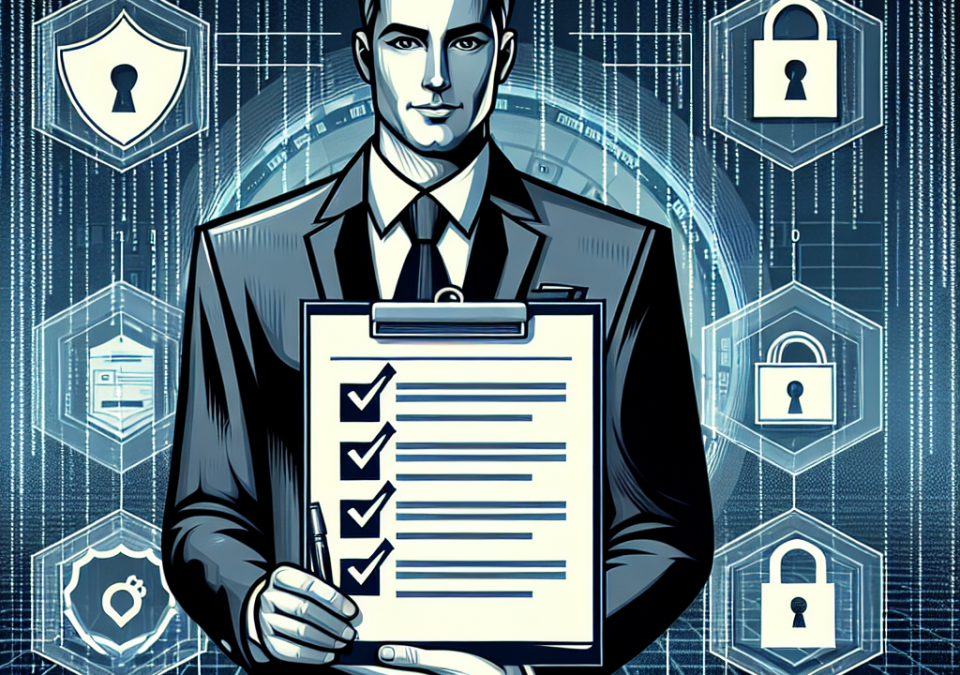
The Intersection of IT Governance and Security Compliance: What You Need to Know
July 13, 2025
Maintaining Compliance in a Remote Work Environment: Challenges and Solutions
July 14, 2025
In an era defined by rapid technological advancement and increasing dependence on digital infrastructure, cybersecurity compliance has become a crucial priority for organizations of all sizes. With data breaches, cyberattacks, and privacy regulations on the rise, being proactive rather than reactive is essential. Staying compliant not only protects sensitive information but also enhances your organization’s reputation and builds trust with customers. To help you navigate the compliance landscape, here’s a comprehensive cybersecurity compliance checklist that every organization should consider.
1. Understand the Regulatory Landscape
Key Regulations to Consider:
- General Data Protection Regulation (GDPR): Applies to organizations handling personal data of EU citizens.
- Health Insurance Portability and Accountability Act (HIPAA): Governs the handling of medical records and personal health information in the U.S.
- Payment Card Industry Data Security Standard (PCI DSS): Required for organizations that handle credit card transactions.
- Federal Information Security Management Act (FISMA): Applies to federal agencies and their contractors, requiring comprehensive security protocols.
Action Steps:
- Identify which regulations apply to your organization.
- Stay updated on regulatory changes and amendments.
2. Risk Assessment
Importance of Risk Management:
Conducting regular risk assessments helps identify vulnerabilities within your systems, data, and processes. This ensures that you can address potential threats proactively.
Action Steps:
- Perform an initial risk assessment to identify assets, vulnerabilities, and possible threats.
- Conduct regular reviews and updates to the risk assessment.
3. Develop a Cybersecurity Policy
Overview:
A robust cybersecurity policy is the backbone of any compliance program. It outlines the organization’s approach to safeguarding information and provides guidelines for employees to follow.
Action Steps:
- Create a comprehensive cybersecurity policy that covers acceptable use, data protection, incident response, and employee training.
- Ensure the policy is easily accessible to all employees.
4. Implement Technical Controls
Essential Controls:
- Firewalls: Protect the network from unauthorized access.
- Antivirus Software: Detects and mitigates malware threats.
- Encryption: Safeguards data in transit and at rest.
- Multi-Factor Authentication (MFA): Provides an additional layer of security for user logins.
Action Steps:
- Regularly update and maintain technical controls.
- Conduct penetration testing to identify weaknesses in security defenses.
5. Data Management and Classification
Importance of Data Classification:
Classifying data helps organizations identify which information is sensitive and requires additional protections, thus allowing for a tailored approach to compliance and security.
Action Steps:
- Implement a system for data classification (e.g., public, internal, confidential).
- Establish protocols for accessing, storing, and disposing of sensitive data.
6. Continuous Monitoring and Auditing
Maintaining Compliance:
Ongoing monitoring and regular audits help ensure that security measures are effective and compliance is maintained over time.
Action Steps:
- Use automated tools for continuous monitoring of networks and systems.
- Schedule regular audits to assess compliance with policies and regulations.
7. Incident Response Planning
Preparedness is Key:
An effective Incident Response Plan (IRP) outlines steps to take in the event of a data breach or cybersecurity incident.
Action Steps:
- Develop and document an IRP that includes communication protocols, containment strategies, and recovery processes.
- Train employees on their roles and responsibilities during an incident.
8. Employee Training and Awareness
Human Element:
Employees play a crucial role in your organization’s cybersecurity posture. Regular training ensures they are equipped to recognize and respond to threats.
Action Steps:
- Implement mandatory cybersecurity training for all employees.
- Conduct phishing simulation tests to improve awareness and response.
9. Third-Party Risk Management
External Dependencies:
Vetting and managing third-party vendors is critical since they can pose risks to your organization’s data security.
Action Steps:
- Develop a process for assessing the cybersecurity posture of third-party vendors.
- Include security requirements in contracts and service level agreements (SLAs).
10. Stay Informed and Evolve
Adaptability is Crucial:
The cybersecurity landscape is ever-changing. Staying informed about new threats, technologies, and regulatory changes is vital.
Action Steps:
- Join professional organizations and subscribe to cybersecurity news sources.
- Regularly review and update your compliance and security measures.
Conclusion
Navigating the complex world of cybersecurity compliance may seem daunting, but a thorough understanding of regulations, risk management, and proactive strategies can help organizations successfully secure their digital assets. By following this comprehensive checklist, you can ensure that you’re equipped to handle the evolving threat landscape and, crucially, that you don’t get left behind. Staying compliant isn’t just about fulfilling obligations; it’s about safeguarding your organization’s future.







